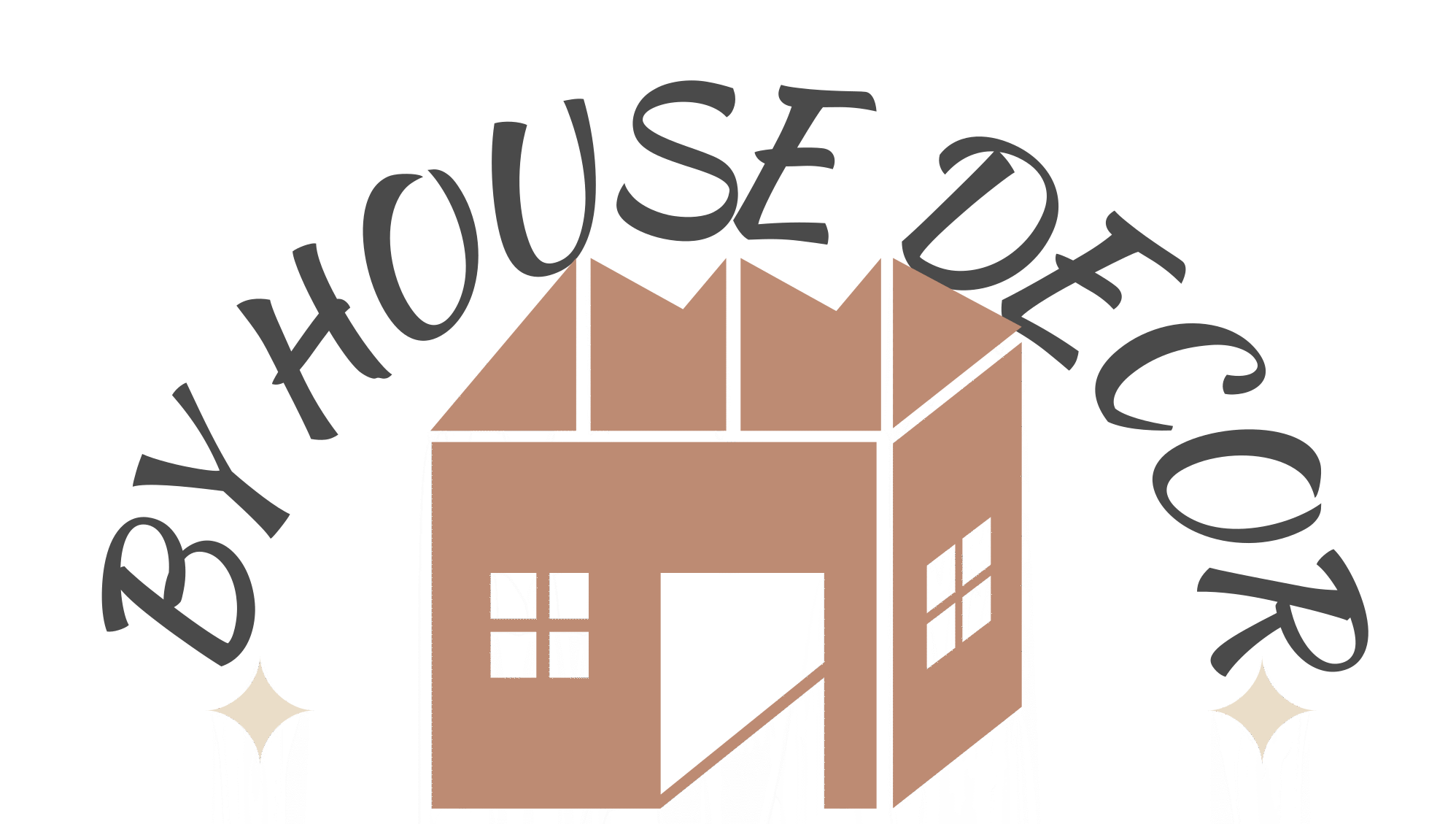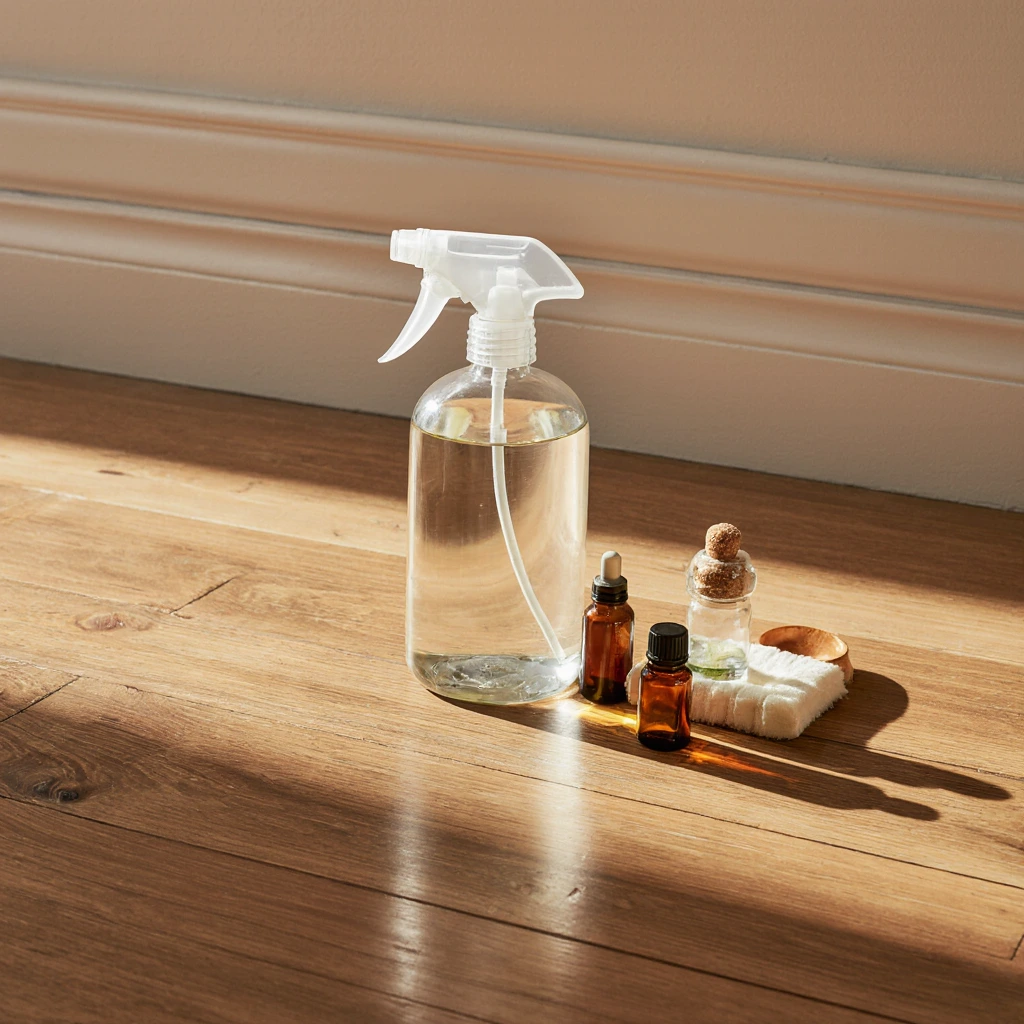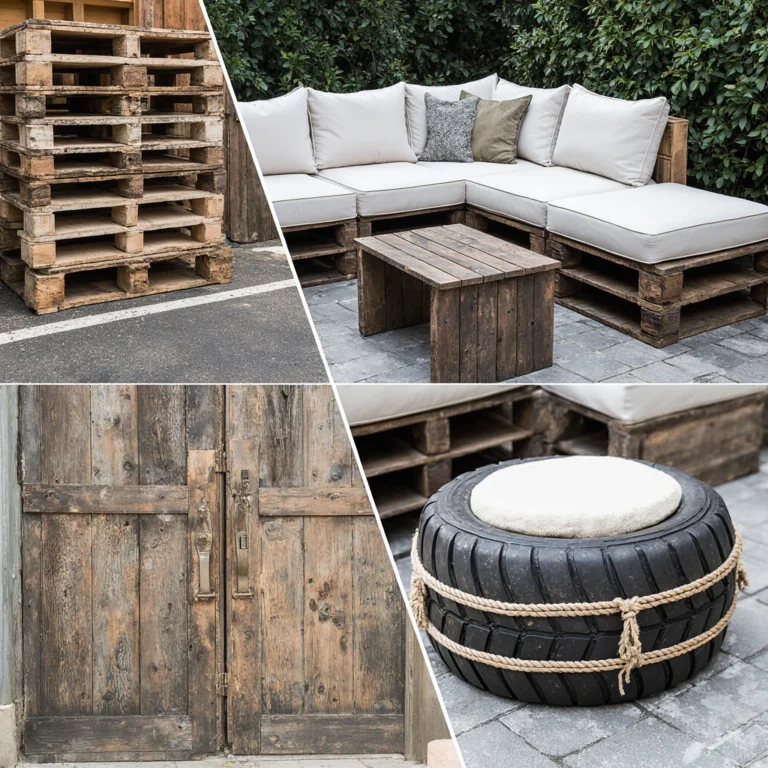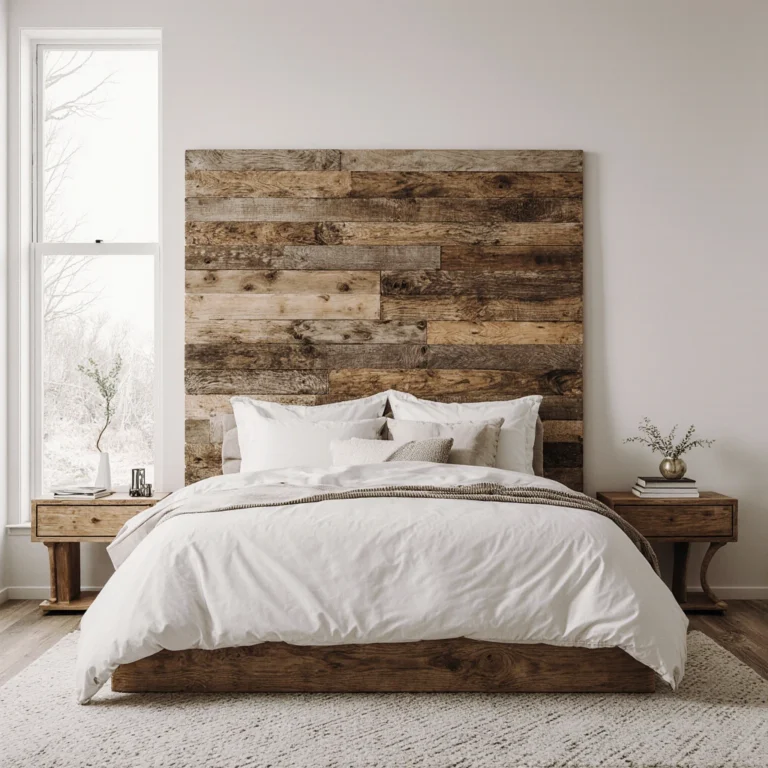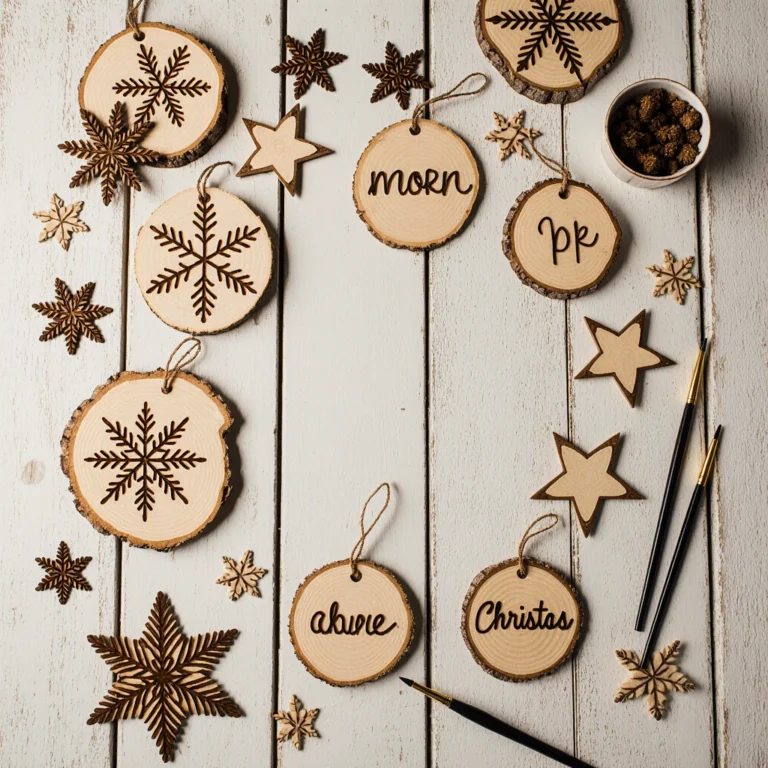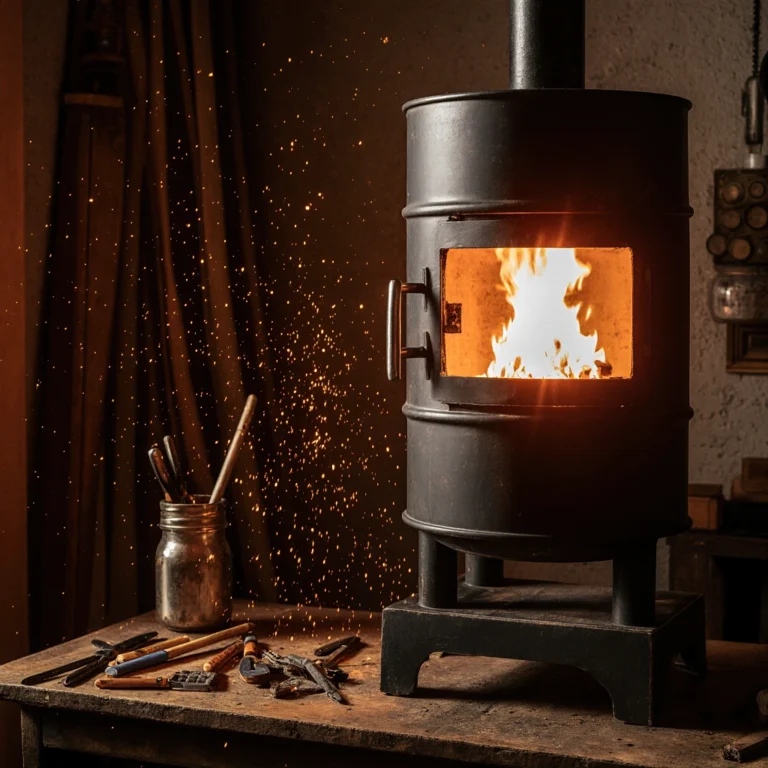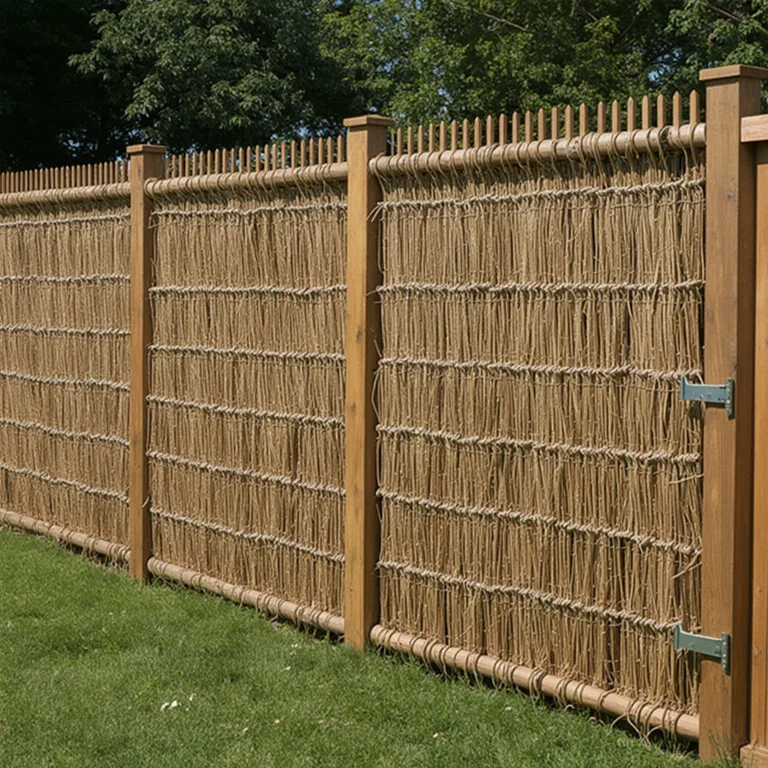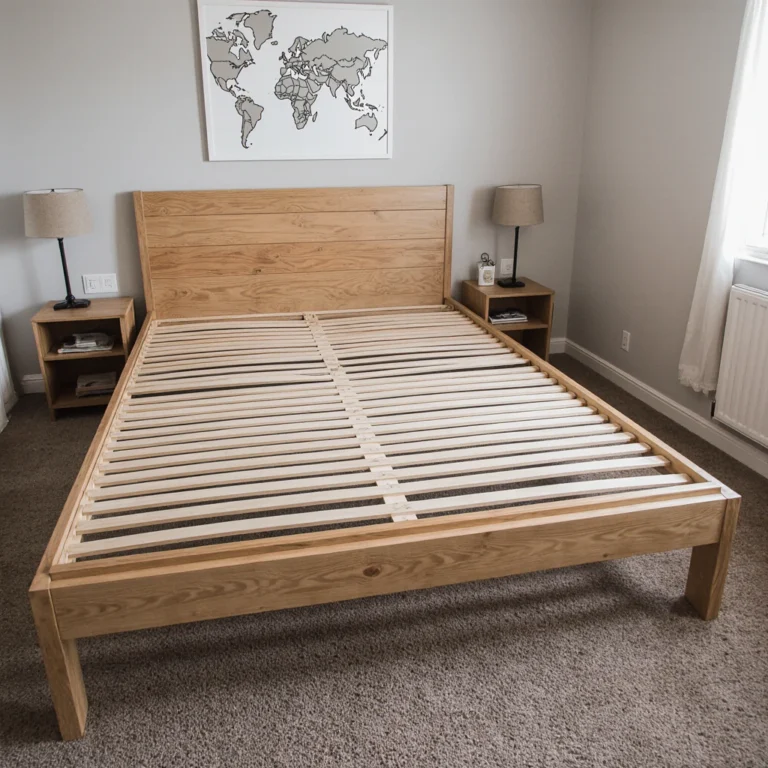DIY Wood Floor Cleaner: Economical Solutions for Shiny, Clean Floors
Table of Contents
Making a DIY wood floor cleaner turns expensive floor care into an effective and affordable cleaning routine that protects your beautiful wood surfaces and saves you money. Whether you’re dealing with engineered hardwood, solid oak, or reclaimed wood, homemade cleaning solutions offer gentle and effective alternatives to commercial products that often contain harsh chemicals.
The rising cost of home maintenance has driven many homeowners to turn to homemade solutions, and floor cleaning is one of the most effective areas where you can achieve professional results without breaking the bank. Studies show that households spend an average of $150 to $200 per year on specialty floor cleaners. However, the most effective wood floor cleaning solutions can be made using common household ingredients for less than $10 per year.
Why Choose DIY Wood Floor Cleaners Over Commercial Products?
Health and Safety Benefits
Commercial wood floor cleaners often contain volatile organic compounds (VOCs), synthetic fragrances, and harsh chemicals that can cause allergies and respiratory problems. A DIY wood floor cleaner eliminates these concerns while providing equally effective cleaning power.
Natural ingredients, such as white vinegar, castile soap, and essential oils, create a safer environment for children, pets, and family members with chemical sensitivities. Unlike store-bought cleaners that can leave residue that can affect indoor air quality, DIY solutions break down naturally without side effects.
Cost-Effectiveness and Sustainability
Making your own wood floor cleaning solution reduces the plastic waste generated by commercial cleaner containers while significantly reducing cleaning costs. A single batch of homemade cleaner typically costs less than $2 and cleans the same area as a commercial product priced between $12 and $15.
The environmental impact extends beyond just cost savings. Household cleaners reduce transportation emissions associated with commercial products and reduce packaging waste, making your cleaning routine more sustainable.
Key Ingredients for DIY Wood Floor Cleaners
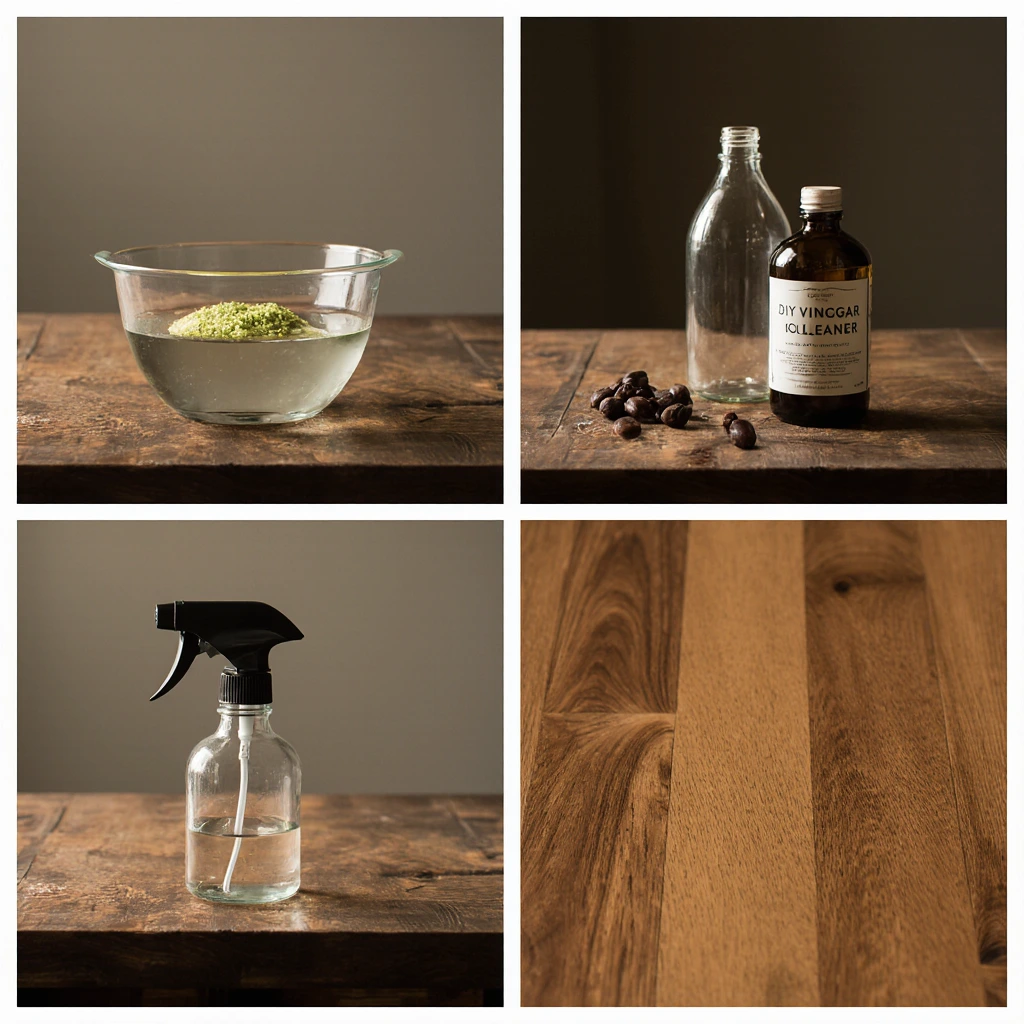
White Vinegar: The Natural Degreaser
White vinegar is the basis of the most effective DIY wood floor cleaners. Its natural acidity breaks down dirt, dust, and soap scum without harming wood finishes. The key is proper dilution—typically 1/2 cup per gallon of water for sealed hardwood floors.
Never use vinegar on unsealed, waxed, or oiled floors, as the acidity can damage these surfaces. Always test any homemade cleaner on an inconspicuous area before full use.
Castile Soap: Gentle and Effective
Castile soap provides gentle cleaning power without the harsh detergents found in traditional cleaners. Made with vegetable oils, it effectively removes dirt while being safe for wood finishes. Use only one or two teaspoons per gallon of water, as too much soap can lead to residue buildup.
Essential Oils: Natural Fragrance and Antimicrobial Properties
Essential oils, such as tea tree, lavender, or lemon, provide a pleasant aroma with natural antimicrobial benefits. Tea tree oil has powerful antifungal properties, making it ideal for homes with moisture issues. Use 10-15 drops per gallon of cleaning solution.
Rubbing Alcohol: Fast Drying Power
Isopropyl alcohol helps wood floor cleaner dry quickly, preventing water damage and reducing streaking. It also provides additional disinfecting properties. Use 1/4 cup per gallon of cleaning solution.
Top 5 DIY Recipes for Cleaning Hardwood Floors
Recipe 1: Basic Vinegar-Based Cleaner
Ingredients:
- 1/2 cup white vinegar
- 1 gallon warm water
- 10 drops of essential oil (optional)
Directions:
- Mix vinegar and water in a large bucket.
- Add essential oil, if desired.
- Mix well.
- Use immediately or store in a spray bottle for up to a week.
This simple recipe is highly effective for routine cleaning of sealed hardwood floors.
Recipe 2: Gentle Castile Soap Solution
Ingredients:
- 2 teaspoons of liquid Castile soap
- 1 gallon of warm water
- 1/4 cup of white vinegar
- 15 drops of lavender essential oil
Directions:
- Add the Castile soap to the warm water.
- Stir gently to avoid excessive bubbles.
- Add the vinegar and essential oil.
- Mix well and use within 24 hours.
Ideal for floors that need a deeper clean without harsh chemicals.
Recipe 3: Powerful Natural Degreaser
Ingredients:
- 1/2 cup white vinegar
- 1/4 cup rubbing alcohol
- 1 tablespoon liquid Castile soap
- 1 gallon warm water
- 20 drops tea tree oil
Directions:
- Place all ingredients in a bucket.
- Stir well until thoroughly blended.
- Test on a small area before full use.
- Use for tough stains and heavy dirt.
This powerful formula removes stubborn dirt and provides antimicrobial benefits.
Recipe 4: Quick-Drying Spray Cleaner
Ingredients:
- 1 cup water
- 1/3 cup white vinegar
- 1/3 cup rubbing alcohol
- 1 or 2 drops dish soap
- Essential oil (optional)
Directions:
- Place all ingredients in a spray bottle.
- Shake well before each use.
- Spray lightly over the floor surface.
- Wipe with a microfiber mop or cloth.
Ideal for quick touch-ups and spot cleaning.
Recipe 5: Oil-Based Wood Conditioner
Ingredients:
- 2 cups warm water
- 1/2 cup olive oil
- 1/4 cup white vinegar
- 10 drops lemon essential oil
Directions:
- Mix all ingredients well.
- Apply with a microfiber cloth.
- Distribute in small sections.
- Dry immediately.
This recipe cleans wood surfaces and adds light moisture. ## Step-by-Step Application Guide
Preparation Step
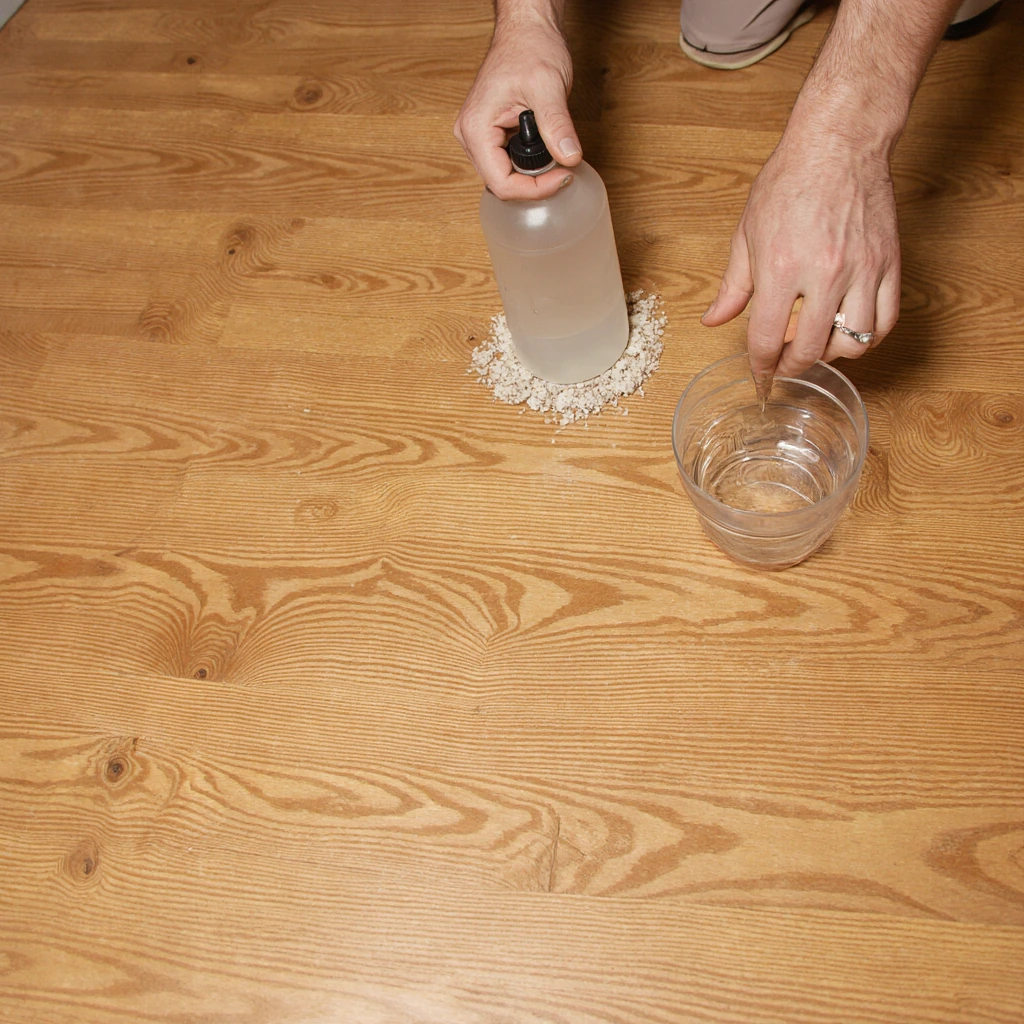
Before using any homemade wood floor cleaner, sweep or vacuum thoroughly to remove accumulated dirt. Pay special attention to corners and edges where dirt accumulates. Remove furniture or place protective pads under the legs to prevent scratching during cleaning.
Check the type and finish of your wood floor. Sealed floors withstand most household cleaners, while unsealed or waxed floors require gentler cleaning methods. If in doubt, consult the manufacturer’s recommendations or test the product in an inconspicuous area.
Application Techniques
Spray Method:
- Lightly spray the cleaner in sections 3-4 feet long.
- Avoid over-saturating the wood.
- Clean with a microfiber mop in circular motions.
- Start from the far corner toward the exit.
Bucket Method:
- Dip a mop into the solution and wring it out until it is slightly damp.
- Clean in sections, rinsing the mop frequently.
- Change the solution if it becomes dirty.
- Then use a dry microfiber cloth if necessary.
Drying and Finishing
Proper drying prevents water damage to floors and ensures streak-free results. Open windows or use fans to improve air circulation. Do not walk on clean floors until they are completely dry, usually for 15-30 minutes depending on humidity and ventilation.
Tools and Materials for Success
Essential Cleaning Tools
Microfiber mops: Superior to traditional filament mops, microfiber picks up dirt without scratching and requires less water. Choose flat mops for even cleaning and easy wringing.
Microfiber cloths: Keep several dedicated floor cleaning cloths. Wash them separately from other clothing to maintain their effectiveness and prevent lint transfer.
Spray Bottles: High-quality glass or plastic bottles prevent chemical reactions and allow for precise application. Clearly label solutions and include expiration dates.
Storage and Organization
Store household cleaners in cool, dark places out of reach of children and pets. Most solutions remain effective for one to two weeks when stored properly. Prepare a dedicated cleaning kit with all the supplies needed for effective floor maintenance.
Seasonal Wood Floor Care Projects
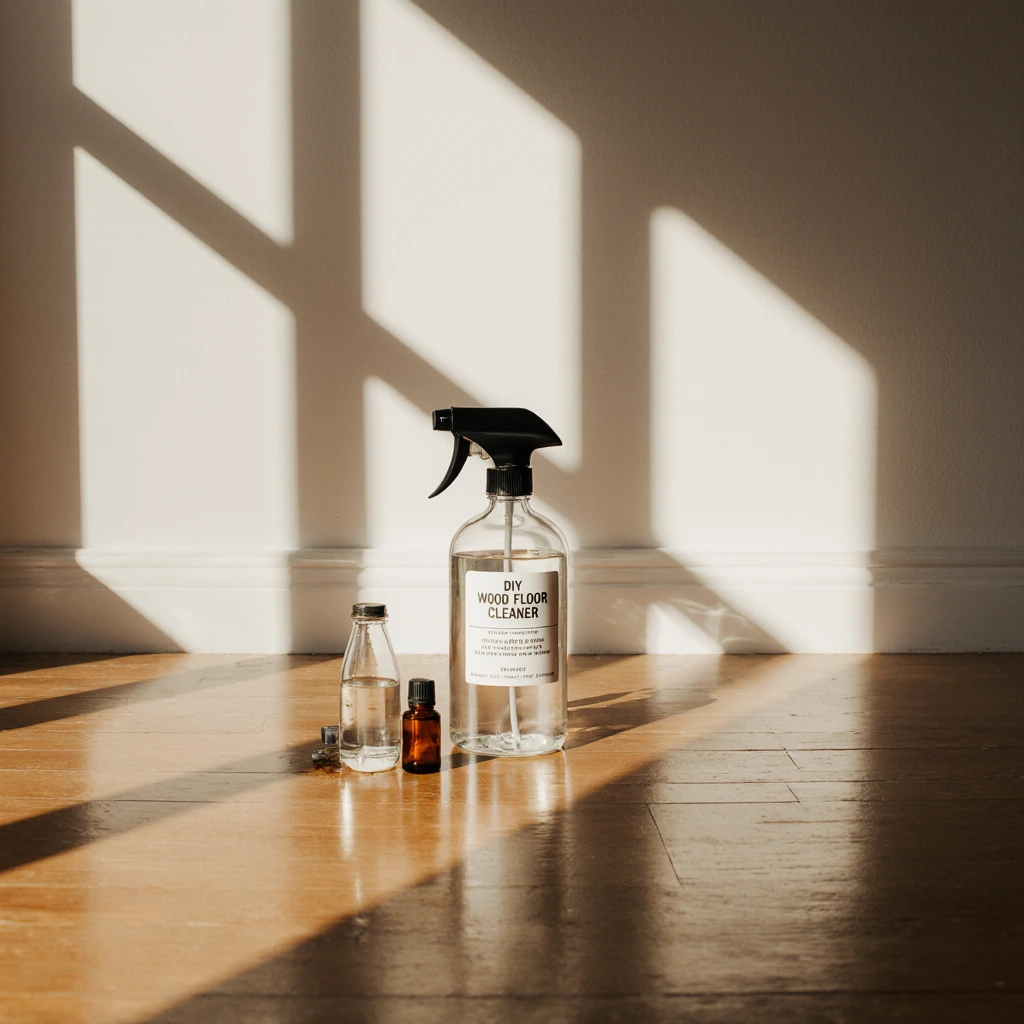
Spring Deep Cleaning
Spring is the perfect time for a thorough floor restoration. Create a stronger homemade wood floor cleaner to remove winter buildup. Focus on high-traffic areas that may need extra care after months of salt, mud, and debris.
Consider adding a moisturizing step using an oil-based recipe to restore moisture lost during the dry winter months. This seasonal approach maintains the beauty of floors while preventing long-term damage.
Summer Care
The hot, humid summers require modified cleaning methods. Increase drying time and consider adding more rubbing alcohol to solutions to speed evaporation. Focus on preventing moisture damage while maintaining cleanliness.
Preparing for Fall
Prepare your floors for winter with a deep cleaning and protective treatments. This seasonal care prevents damage from foot traffic and harsh indoor weather conditions.
Preparing for the Holidays
Before hosting holiday guests, use gentle everyday cleaners to maintain floors without strong chemical odors. Quick-drying formulas are ideal for touch-ups before guests arrive.
Recycling and Reusing Cleaning Supplies
Innovative Container Solutions
Turn empty commercial cleaning bottles into storage spaces for homemade solutions. Glass jars are ideal for storing concentrated cleaning recipes. Old spray bottles can be reused for various cleaning formulas.
Household Mop Alternatives
Make effective cleaning tools from household items. Old T-shirts make excellent substitutes for microfiber when cut to the appropriate size. Use clean socks as dusting cloths for quick floor maintenance.
Common Mistakes When Cleaning Wood Floors Yourself
Overwetting the floors
The most common mistake is using too much liquid, which can cause warping, warping, or damage to the finish. Always use less cleaner than more. Remember that wood floors require little moisture for effective cleaning.
Using Inappropriate Ingredients
Avoid ingredients that can damage wood finishes. Never use ammonia, bleach, or oil-based soap on sealed floors. Lemon juice, although natural, can be too acidic for some finishes.
Inadequate Testing
Always test new cleaner recipes in inconspicuous areas before full use. Different wood types and finishes react differently to different ingredients.
Inappropriate Mixing Proportions
Follow recipes carefully, especially regarding vinegar and soap concentrations. Excessive vinegar can dull the finish, while excessive soap can lead to buildup.
Advanced Tips for Professional Results
Water Quality Considerations
Hard water can affect cleaner performance and leave mineral deposits. Filtered or distilled water is recommended in recipes for best results. This simple change significantly improves cleaning effectiveness.
Improve Temperature
Warm water enhances cleaning power without damaging the wood. Avoid hot water, which can damage finishes and produce excess steam. Room temperature water is a good choice for quick cleaning tasks.
Timing Strategies
Clean floors during periods of low humidity whenever possible. Early morning or evening cleaning often provides better drying conditions than midday sessions.
Common Troubleshooting
Streaking Problems
Streaking typically results from using too much cleaner or improper drying techniques. Reduce the concentration of cleaner and ensure complete drying between applications.
Residue Buildup
The presence of soap residue indicates excessive cleaner use or insufficient rinsing. Use vinegar solutions only temporarily to remove buildup, then adjust the mixing ratios later.
Dull Appearance
This dull appearance may be caused by product buildup or improper ingredients. Use a vinegar solution to remove buildup, then return to gentler cleaning.
Create Your Own Floor Care Routine
Daily Maintenance
Follow simple daily practices that reduce the need for deep cleaning. Vacuum high-traffic areas, treat spills immediately, and use entry mats to reduce dirt penetration.
Weekly Deep Cleaning
Follow a weekly routine using your chosen homemade hardwood floor cleaner recipe. Regular maintenance prevents dirt buildup and significantly extends the life of your floor.
Monthly Assessment
Assess the condition of your floor monthly and adjust your cleaning methods accordingly. Some areas may need more frequent care, while others require only light maintenance.
Your journey to better floor care begins with understanding that effective cleaning doesn’t require expensive commercial products. These at-home solutions deliver professional results while protecting your family’s health and your budget.
Best Amazon Picks :
FAQs
Q: Can I use a homemade wood floor cleaner on all types of hardwood floors?
A: Most homemade cleaners work well on sealed hardwood floors, but always test first. Avoid using vinegar solutions on unsealed, waxed, or oiled floors. If in doubt, refer to the manufacturer’s recommendations.
Q: How often should I deep clean my hardwood floors with homemade cleaners?
A: A weekly deep cleaning is appropriate for most homes, with daily spot cleaning as needed. High-traffic homes may require more frequent cleaning, while low-traffic areas can be cleaned less frequently.
Q: Will homemade cleaners damage the floor finish?
A: Properly formulated homemade cleaners are gentler than many commercial products. Always follow recipe proportions exactly and avoid over-wetting the floors. Test new recipes in inconspicuous areas first.
Q: Can I store homemade hardwood floor cleaners for a long time?
A: Most homemade cleaners remain effective for one to two weeks when properly stored in cool, dark places. Prepare small batches frequently rather than storing large quantities for extended periods.
Q: What should I do if my homemade cleaner leaves streaks?
A: Streaking usually indicates too much cleaner or improper drying. Reduce the concentration of cleaner, use less liquid, and ensure complete drying. Streaks can be removed with a clean, dry microfiber cloth.
Q: Are essential oils necessary in homemade hardwood floor cleaners?
A: Essential oils are optional, but they add a pleasant scent and additional antimicrobial benefits. If you have pets or family members who are sensitive to fragrances, you can omit them without compromising cleaning performance.
Q: Can I use these recipes on laminate or engineered wood floors?
A: Many recipes work well on laminate and engineered wood floors, but check the manufacturer’s instructions first. These surfaces often require more gentle cleaning methods than hardwood floors.
